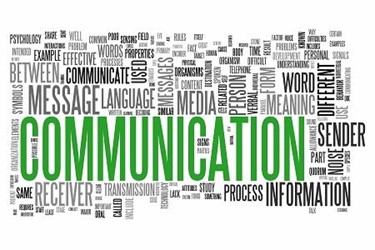High Impact Communication: A Three Tier Approach

By Janet M. Shlaes, Ph.D.
High Impact communication is essentially a dance that flows between participants. As in most dances, there might be awkward moments, as one develops a sense of their partner’s style, and more elegant graceful moments, when partners are in the flow of the dance. The inherent skills and mindsets of high impact communication are developed over time through intention, practice and embracing a three tier approach. This approach includes essential skills and mindsets to embody BEFORE, DURING and AFTER the communication.
BEFORE
The first tier is foundational, setting the stage for what is to follow. Most people tend to plunge into their communications without adequate preparation. They fail to realize that what takes place before a conversation serves to separate out those with exceptional communication skills from those with mediocre or ineffective skills. Spending time on the following will provide consistent added value over time.
- Know your natural style and how this style is perceived by others. Are you inherently outgoing or do you tend to be more self-contained? Is your style more down to earth or do you tend to be more formal in your speech and behavior? Each of these ways of being in the world will have a distinctive impact on others.
- Know your audience - their values, needs, motivators, what keeps them up at night – and strive to adapt your approach and communication style to honor and respect your audience. It’s critical to meet your audience of one or one hundred where they are at, rather than where you are at. Knowing your audience will help you craft your message in a respectful and engaging manner.
- Know your desired outcome, specifically, what do you want to accomplish through your communication – for yourself and for others. It can be highly irritating when someone rambles on and on in a communication, never getting to the heart of the desired communication.
- Leave your ego at the door. A conversation is rarely effective when one is solely focused on what’s in it for him/herself.
DURING
The second tier is all about the how – specifically, how high impact communicators behave during the communication. In the BEFORE tier, clarity regarding yourself, your audience and your desired outcome has been realized. In the DURING tier, high impact communicators consistently incorporate the following into their conversations.
- Focus on the relationship via building trust and respect. Almost any type of message can be accepted when an environment of trust and respect is established. Trust is about feeling safe and respect incorporates feeling that one is seen, heard and matters. Building trust and respect requires authenticity, congruence, humility and vulnerability.
- Seek to generate win/win outcomes. This approach is the ultimate relationship builder. High impact communicators understand that the greatest communication outcomes occur when all participants feel that their needs and agendas are being met.
- Listen more than you speak. People tend to withdraw and shut down when they feel that they’re being talked at or talked down to. Attend to non-verbal communication and strive to understand the other person’s point of view.
- Ensure your intended message is the received message. Check in periodically to ensure that all participants are in the same conversation. Adjust your approach/style if you discover that it isn’t working.
AFTER
The third tier serves to deepen relationships, as well as strengthen the foundation for future communications. High impact communicators know that the end of a successful communication organically provides the opening for subsequent conversations. High impact communicators keep the connection going via the following post-conversation actions.
- Express appreciation – for the time, energy, openness and contribution to the communication provided by the other person.
- Provide a brief summary of outcomes and next steps. If the communication was about resolving a problem or working on a specific project, provide a summary of your understanding of the next steps and deadlines for each participant.
- Follow-up on commitments/agreements in the established timeframe. This serves to deepen trust and respect, establishing congruence between your words and actions.
High impact communication skills and mindsets are developed over time. With intention, commitment and practice, the skills and mindsets in this three tier approach will quickly become your natural way of moving through the world and will consistently yield mutually satisfying outcomes.
 Dr. Janet Shlaes has over 20 years of transformational results in the organizational, leadership, career and life-design realms. In addition to holding a variety of leadership positions in the financial and non-profit arenas, Janet creates and facilitates customized programs, trainings, seminars and retreats focusing on organizational, change management, life-design and leadership development for corporate and non-profit arenas. Janet’s credentials include an MA and Ph.D. from Northwestern University and an MBA in Finance from Loyola University of Chicago. Janet is a Licensed Psychologist, Certified Structural Consultant, Creating Your Life Trainer, NLP Master Level Practitioner and Modeler, Mindfulness Meditation Stress-Reduction Trainer, and is certified in Positive Psychology, Eriksonian Hypnosis and Knowledge Management. http://transformationalcommunication.blogspot.com/
Dr. Janet Shlaes has over 20 years of transformational results in the organizational, leadership, career and life-design realms. In addition to holding a variety of leadership positions in the financial and non-profit arenas, Janet creates and facilitates customized programs, trainings, seminars and retreats focusing on organizational, change management, life-design and leadership development for corporate and non-profit arenas. Janet’s credentials include an MA and Ph.D. from Northwestern University and an MBA in Finance from Loyola University of Chicago. Janet is a Licensed Psychologist, Certified Structural Consultant, Creating Your Life Trainer, NLP Master Level Practitioner and Modeler, Mindfulness Meditation Stress-Reduction Trainer, and is certified in Positive Psychology, Eriksonian Hypnosis and Knowledge Management. http://transformationalcommunication.blogspot.com/
